June began in a state park in Mountain View, Arkansas, celebrating mine and Damien’s anniversary (twelve together, two married). After waking up on a sunny Saturday morning, I made a cup of coffee in the French press while Damien slept, then I headed to the deck attached to the cabin. Drinking coffee and working in my sketchbook on the handcrafted Adirondack chair, I heard a stirring under the deck of the next cabin over. Assuming it was a squirrel, I wasn’t necessarily in a hurry to catch a glimpse.
However, when I did look over, I saw a mama marmot peeking out from under an adjacent deck instead. Just as she noticed me noticing her, she retreated back under the safety of the deck. Eventually, she and her baby made their way out from under the deck to snack on hushpuppies left out by the man in the cabin next door (his leftovers from a nearby catfish restaurant). The man revealed that he’d been feeding them hushpuppies, shouting a clarifying question toward his wife in the cabin. He will likely never know that he’s been immortalized in my sketchbook with this line:
The rest of our trip was spent celebrating spring and ushering in the beginning of summertime. We swam in a creek every day of our trip, listened to folks play mountain music on their porches, and ate plenty of fish beside the White River. John Prine spent a lot of time in Mountain View, and I understand why he would. It feels like a very special place.
If you love this post but don’t want to commit to a paid subscription, you can support my work by “buying me a coffee” by clicking the button above. Proceeds will go directly into the farm, always. One million thank-yous for your support, monetary or otherwise.
Our Oklahoma Ozarks received an abundance of rainfall while we were away, so we returned to lush forests and fields of wildflowers. Wild blackberries were an almost glowing red, massive summer squash plants spilled over garden beds, and milkweed exploded with vibrant orange hues on the prairie. The fruit trees were teeming with small peaches, plums, and pears, asparagus had shot up with ferny leaves, chamomile bloomed, tulsi basil grew taller, peas were ready for picking, and plenty more plants were full of vigor.
Delayed heat and lots of rain has made for a slower year for annuals like tomatoes and peppers, but they are finally growing strong and steadily, now flowering and producing fruit. Early spring foods like radishes, beets, and leafy greens are growing now, enjoying a relative lack of oppressive southern heat. Other plants growing right now are potatoes, sweet potatoes, blueberries, beans, turnips, volunteer winter squash, hollyhocks, zinnias, sunflowers, anise hyssop, sage, calendula, purple coneflowers, and the garlic is merely days or a week from harvest.
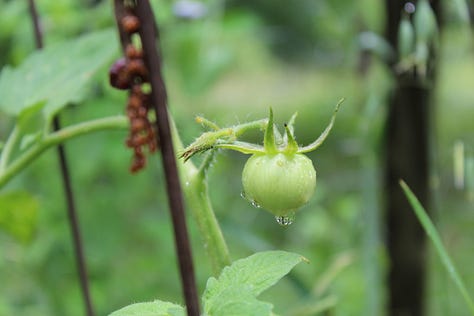
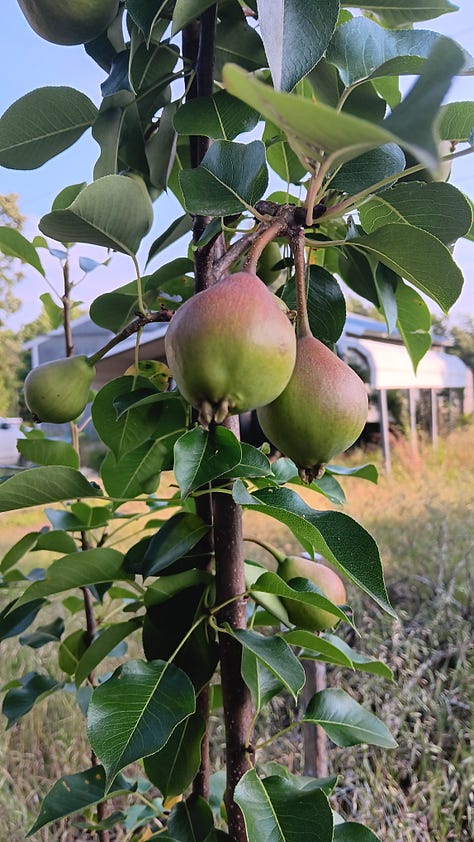

The past couple of weeks have been packed with activities like swimming, fishing, going to poetry readings, attending a class at my community center, and more. Last weekend I went fishing with my mom for the first time since I was a kid. I didn’t catch anything but branches, but some folks we were with caught several breams (also called sunfish or bluegill depending on where you are) big enough for a meal. It was honestly just really nice to sit on the edge of a lake eating sandwiches and catching up and finishing up the fishing trip with a dip in the lake.
The cicadas and tree crickets have been singing to us most evenings, the armadillo has been digging around in the garden, deer rustle around near the forest’s edge in the early mornings, and we’ve seen bunnies and bats aplenty— all signs that an Ozark summer is steadily creeping in.
Chores for Mid-Summer
Along with the cicadas, midsummer brings new yet familiar chores on the homestead. Here’s a list of garden projects and tasks to focus on to keep your garden thriving:
Harvest, harvest, harvest! By now, you probably have some food that’s ready for harvest: radishes, greens, peas, herbs, and flowers need to be harvested either to make room for succession planting of more crops or to get them to keep producing throughout the season.
Water your garden consistently, but not necessarily every day. Giving your garden a twice weekly, deep watering is best. This method of watering encourages plants to develop deeper roots, making them more drought tolerant in the heat of summer. Early morning is the best time to water because plant leaves that stay wet through the night are more susceptible to fungus and diseases.
Start planting for fall. Outdoors, direct sow things like winter squash, carrots, turnips, okra, beets, radishes, leafy greens, bush beans, collards, marigolds, and even more cucumbers. I do not bother with indoor sowings this time of year because I’m just too busy to tend to outdoor and indoor plants, but if you wanted to, you could sow lettuces, other greens, flowers, and herbs indoors.
While many pests won’t cause much harm and provide food for pollinators, there are a few that will genuinely ruin a crop. Monitor garden pests like tomato hornworms, Japanese beetles, and squash vine borers and squash and/or remove them as soon as you can.
Add compost to heavy feeders like tomatoes, peppers, and sweet potatoes. This will give them the boost they need to produce and stay healthy throughout the summer.
Mulch plants as needed throughout the summer to help the soil retain moisture.
Speaking of moisture, control mosquitoes by eliminating stagnant water sources. Even better, if you are able, install a bat house to encourage bat habitat, they eat mosquitoes!
Harvest garlic and onions as their tops turn yellow and fall over. Simply pull them out of the ground when it’s dry, shake off the dirt as much as you can, and let them dry for a few weeks. After they’re dry, you can hang or braid them to let them continue to cure.
Prune herbs to promote bushy growth rather than tall, lanky growth. Generally, you want to pinch them back right above a set of leaves to keep them healthy and prevent them from flowering until later in the year.
Now is a good time to sow a warm-weather, fast-growing cover crop like buckwheat to cover bar soil and provide weed suppression, meanwhile adding nutrients to renew soil that’s had its nutrients depleted.
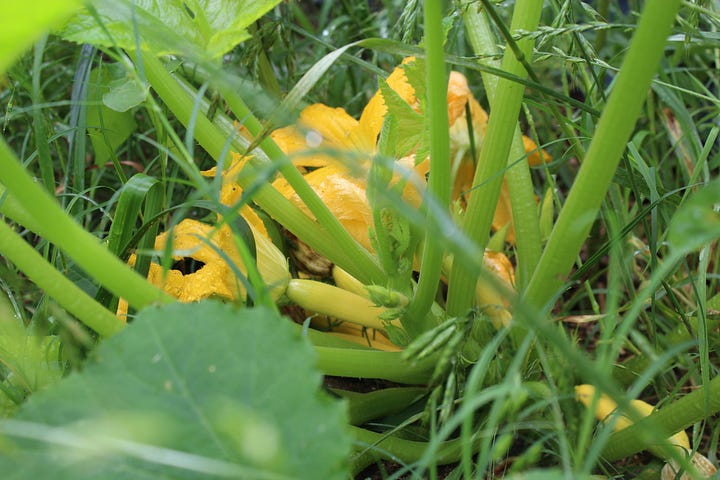
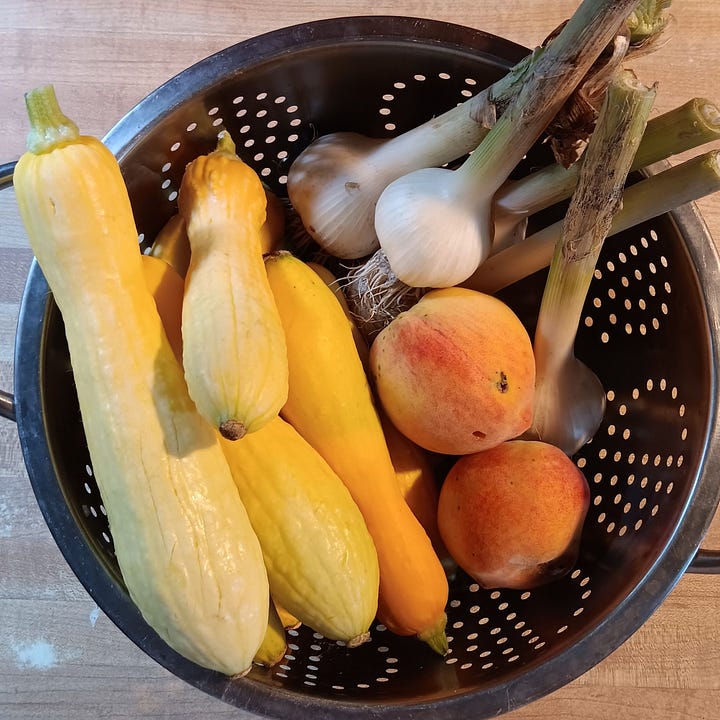
Community Corner
Each Monday since the beginning of June, I have been attending a Cherokee History class at our local community center. This class is taught by Catherine Foreman Gray and David Fowler, both members of the Cherokee Nation and both educators. The class is totally free and includes a home-cooked meal and a full color textbook. It has been a really enjoyable experience, and I find myself looking forward to going each Monday after work.
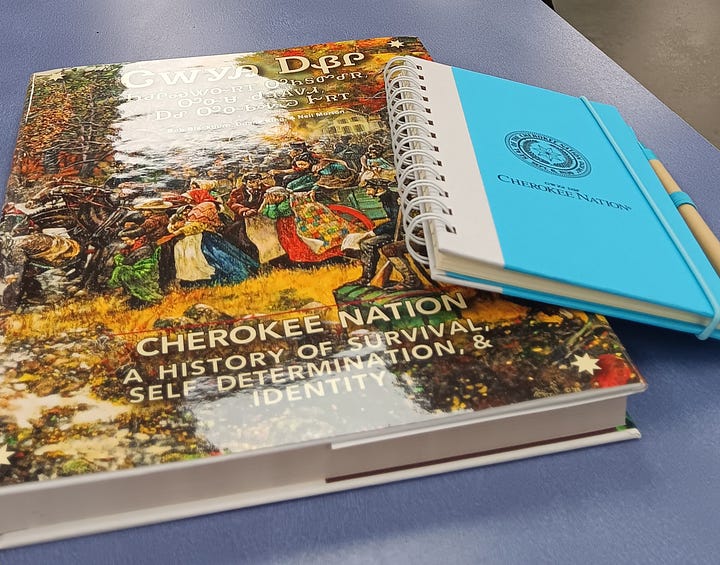

If you’re local, you can find information about classes here.
Chip Drop: A Thrifty Resource
This month’s resource/tip is one that any thrifty folks will appreciate (and us gardeners/farmers/artists tend to be among the thriftiest people).
It’s Chip Drop: A free service that connects folks looking for free wood mulch and/or logs with arborists who are looking to offload wood mulch and/or logs. It takes only a minute or two to sign up, and you can renew your request as many times as you want.
I am currently signed up for chip drop, and though I haven’t received a pile of mulch yet, I can see an interactive map of folks a few towns over who have— so there’s hope! Mulch can be expensive, and the decorative stuff is filled with colorants and additives which are things you do not want in a vegetable garden. I hope this is something you can use to help cut costs a bit in your garden.
As Summer Arrives
These longest days of the year are an opportunity to absorb the sun and enjoy the fruits of your labor earlier in the year. Where I live, it can also be a time to reset and restart. If the gardening year hasn’t gone how you had planned, there are still plenty of warm, sunny days ahead to start anew. If you haven’t already, consider planting your fall and winter crops. Spend a sunny morning foraging for summer berries like mulberries, blackberries, huckleberries, and gooseberries and bake a pie or make jam. Most importantly, don’t forget to water your garden and don’t forget to jump in a body of water from time to time if you’re able.
Happy Summer Solstice, happy gardening, happy artmaking, and happy creek swimming!
Cheers,
Allyson
If you’re new here, hi! I’m Allyson. My partner and I have a small farm where we practice agroecology, grow food, raise animals, make art, and continually work toward creating healthy soil and healthier lives. Aside from farming, I’m a visual artist who enjoys writing and my partner, Damien Uriah, is an accomplished, published poet and musician.
Our goal is to share updates from an agroecology-focused farm run by two creatives with day jobs, show how you can grow food without devastating ecosystems (while acknowledging that big change needs to happen from the top), help people learn about food, flora, and fauna, and to create a wealth of community knowledge with others.
I hope you’ll stick around and subscribe (free and paid options) and grow with us.
If you love this post but don’t want to commit to a paid subscription, you can support my work by “buying me a coffee” by clicking the button above. Proceeds will go directly into the farm, always. One million thank-yous for your support, monetary or otherwise.


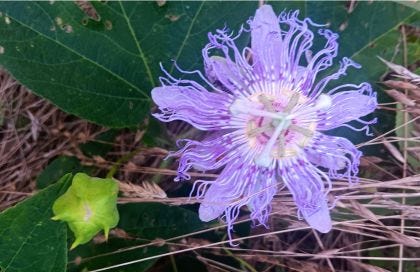





My grandmother saw John Prine in concert when he was just getting started. :)
Thoughts on neem oil to rid pests from our tomatoes?